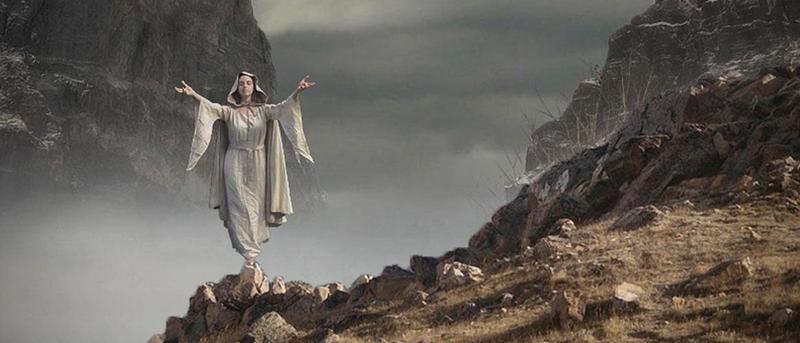Ancient Synagogue Predating Second Temple Ruin Found
Ancient Synagogue Predating Second Temple Ruin Found
Two archaeological discoveries made in the Galilee over the summer tell a story that differs from the standard description of the devastation in the country following the Great Revolt of the Jews against the Romans.
Excavations by the Hebrew University of Jerusalem at Zippori have revealed frescoes with human and animal images from about 1,800 years ago – a rare find for that time in the land of Israel.
And in Nahal Tabor in the Eastern Galilee an archaeological expedition from Kinneret College has uncovered a Second Temple-era synagogue predating the destruction of the Temple – the first to be discovered in a rural rather than an urban setting.
In 67 C.E. the leaders of the Jewish town of Zippori made a dramatic decision not to join the revolt against Rome. It saved the city and earned it the affection of Rome, which granted it the status of polis. Thus, while Jerusalem lay in ruins, Zippori flourished with colonnaded streets and monumental structures, where a mixed population of Jews and pagans lived.
One of the largest public structures from this period was uncovered in this summer’s excavation, led by Prof. Zeev Weiss, who has been digging the site for 26 years. Hundreds of fragments of colored frescoes were found among the remains of the structure, which was destroyed in the 3rd century C.E., including a lion’s head, a horned animal (apparently a bull), a bird and half a leopard. One fragment reveals a human figure holding a club. Only one other site, Herod’s palace at Herodium, has yielded similar images predating the ones found at Zippori. Such finds are rare during this period because Jews typically did not produce figurative art to avoid breaking the second commandment prohibiting graven images.
“I don’t know if Jews built it, but we have no indication that the population was replaced. There are ritual baths and stone vessels indicating the presence of a Jewish community alongside a pagan one,” Weiss said. “You can see the multiculturalism. Apparently the inhabitants internalized the idea that one can live with the Roman world quietly and there is nothing bad about bathhouses and colonnaded streets,” he added.
Seven synagogues dating from the Second Temple period, but predating its destruction, have been discovered so far in this country. The eighth, and the first in a rural setting, was discovered last week by the Kinneret College excavation at Tel Rechesh, a site near Mount Tabor in the lower Galilee. Synagogues that existed prior to the destruction of the Temple differed from the ones that were built afterwards since it was prohibited to build places of worship anywhere else during the time the Temple stood in Jerusalem. Inscriptions and historical sources show that the synagogues of the period were used for meetings, Torah readings and study, rather than worship. They had neither Torah ark nor regular prayer services. One source mentioning synagogues is the New Testament, which states that Jesus “went through all the towns and villages, teaching in their synagogues.”
“We now know that if there is a Jewish settlement that is identified by stone vessels and an absence of pig bones and we find a building with benches along the walls, that is a synagogue,” excavation director Dr. Mordechai Aviam said. Over the past five years Aviam’s team has discovered a complex of buildings from the Roman period, which he believes was a large estate that was home to a number of families who used the synagogue. Like Zippori, this community survived the Great Revolt. It was apparently abandoned after the Bar Kokhba Revolt in the first century C.E.
Nir Hasson/Haaretz
Be the first to post a message!
